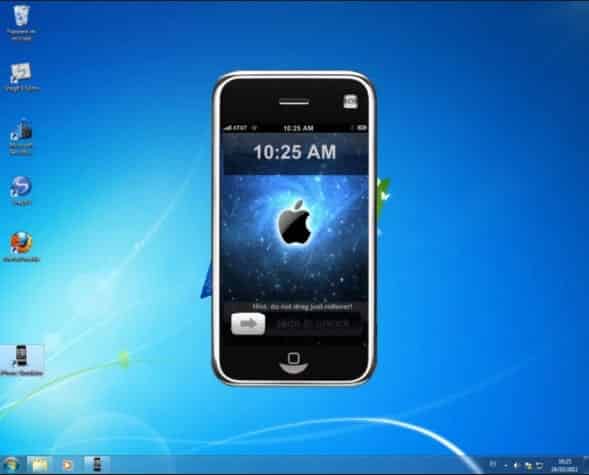

- IPHONE EMULATOR MAC OS C INSTALL
- IPHONE EMULATOR MAC OS C SIMULATOR
- IPHONE EMULATOR MAC OS C FREE
There aren’t a lot of iOS emulators out there these days.

IPHONE EMULATOR MAC OS C INSTALL
However, Apple has banned the sideloading of iPhone apps on M1 Macs, so your only option is to install the approved apps from the App Store.Įasily Run iOS Apps Using These Emulators Previously, you could also sideload iPhone apps, by using the. You can find the iPhone apps in a separate section in Mac App Store. These devices run on Apple’s new ARM chipsets and they can run iPhone apps with ease. If none of the emulators seem to be doing the job for you, currently the best way to run iOS apps on a computer is just by using the new Apple M1 MacBooks and Mac Mini.
IPHONE EMULATOR MAC OS C FREE
You can also run multiple instances of emulators with Electric Mobile Studio which can be helpful if you’re trying to test out your app in multiple devices at the same time.ĭownload Electric Mobile Studio ( Free trial, $39.99) Bonus: Apple M1 Macs Eventually, spotlight should learn and make the alias the top choice so you can skip this step.It comes with WebKit and Chrome debugging tools to allow developers to test out their web apps.
IPHONE EMULATOR MAC OS C SIMULATOR
If necessary, use the down arrow to scroll to the Simulator alias. Type "simulator" or "ios" (if you renamed the alias). Since that has changed from version to version of XCode, this way should work regardless of these changes. Note: There are other ways to get to the location of the Simulator app (steps 1-4), such as using Go to Folder… in the Finder, but those require knowing the location of the Simulator to begin with. Whatever you name it is what it will show up as in Spotlight. If desired, rename the alias from "Simulator" to "iOS Simulator". While holding down Command and Option, drag the Simulator icon to the applications directory. In the dock, control (or right) click on the Simulator icon. From the XCode menu, select Open Developer Tool > Simulator. Initial setup does require launching XCode, but after that, you won't need to just to get to the Simulator. I've tested it on OS X 10.11 and XCode 7.3. Here's the solution that works well for me, and should work with any OS X and XCode versions. Not all of them address what is my number one issue, and what seems to be the asker's priority, as well: The ability to launch from Spotlight. Click the icon in the upper left corner and do Cmd-V to pasteĪs the multitude of answers indicate, there are lots of different ways to address this issue. Right click your Automator app and choose Get Info. Click the icon in the upper left corner and do Cmd-C to copy it. Right click iOS Simulator.app and choose Get Info. To get a nice icon for the Automator app you just made, you can do the following: Finally, save this Automator app in your applications folder as iOS Simulator.app. /Applications/Xcode.app/Contents/Developer/Applications/Simulator.app. /Applications/Xcode.app/Contents/Developer/Platforms/atform/Developer/Applications/iOS Simulator.app. /Applications/Xcode.app/Contents/Developer/iOS Simulator.app. It will be at one of the following paths depending on your version of Xcode (oldest to newest): So instead you'll have to navigate to it in a separate Finder window and drag it onto the file selector window. You can't directly select the Simulator app because it's inside the Xcode.app package. Open the dropdown of applications that can be launched and choose Other. Select Actions > Library > Utilities > Launch Application. You can get it to launch via spotlight if you create an Automator launcher for it: Which would mean you could start the iPhone Simulator from the command line with one easy-to-remember word: $ simulator (Xcode 7+): $ alias simulator='open /Applications/Xcode.app/Contents/Developer/Applications/Simulator.app' (Xcode 6+): $ alias simulator='open /Applications/Xcode.app/Contents/Developer/Applications/iOS\ Simulator.app' (Xcode 6+): $ ln -s /Applications/Xcode.app/Contents/Developer/Applications/iOS Simulator.app ~/DesktopĪs pointed out by you could also add an alias to your ~/.bash_profile: $ alias simulator='open /Applications/Xcode.app/Contents/Developer/Platforms/atform/Developer/Applications/iPhone\ Simulator.app' You could create a symbolic-link from your Desktop to make this easier: $ ln -s /Applications/Xcode.app/Contents/Developer/Platforms/atform/Developer/Applications/iPhone\ Simulator.app ~/Desktop (Xcode 6+): $ open /Applications/Xcode.app/Contents/Developer/Applications/iOS Simulator.app Assuming you have Xcode installed in /Applications, then you can do this from the command line to start the iPhone Simulator: $ open /Applications/Xcode.app/Contents/Developer/Platforms/atform/Developer/Applications/iPhone\ Simulator.app






 0 kommentar(er)
0 kommentar(er)
